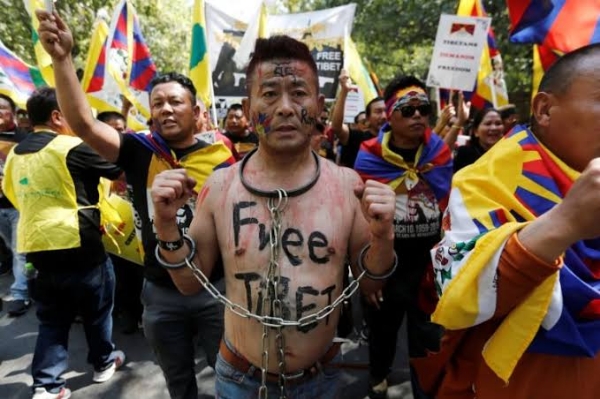
Kolkata, 21 May (H.S.): Beijing's long-standing strategy has been to weaponize history, reshaping it to serve its political agenda. Nowhere is this more evident than in China's repeated assertions over Tibet and Xinjiang—regions it claims to have historically owned. However, independent records and factual history expose this narrative as a calculated distortion aimed at legitimizing imperialist ambitions.
---
Tibet: A History of Independence
1. Misusing the Yuan Dynasty
China argues that Tibet has been a part of its territory since the 13th century under the Mongol-led Yuan Dynasty. However, historical evidence confirms that the Yuan Empire was founded by Mongols—not ethnic Chinese. Tibet never accepted Chinese sovereignty and functioned autonomously as a spiritual center under the Mongol regime.
2. Nominal Qing Influence
From 1644 to 1912, the Qing Dynasty is often cited as another basis for China’s claim. Yet, historians agree that the Qing had only symbolic influence in Tibet. The Chinese Ambans stationed in Tibet had advisory roles, while local administration, judiciary, and religious institutions remained firmly in Tibetan control.
3. Independent Tibet and the 1950 Invasion
Following the fall of the Qing dynasty, Tibet declared independence in 1912, issued its own currency, formed an independent government, and engaged in limited foreign diplomacy. In 1950, under the guise of peaceful liberation, the People's Republic of China invaded Tibet and annexed it. The 1959 uprising led to the exile of the Dalai Lama to India, and since then, China has enforced an oppressive regime, eroding Tibet’s religious, linguistic, and cultural identity.
4. Systematic Cultural Suppression
Mandarin has been imposed over the Tibetan language. Buddhist monasteries have been demolished, religious practices banned, and even possession of the Dalai Lama’s photo is criminalized. Thousands have been imprisoned, and free expression has been extinguished.
---
Xinjiang: A Cultural Assault on Uyghurs
1. A Distinct Ethnic Identity
Xinjiang, officially referred to by China as the Xinjiang Uyghur Autonomous Region, has historically been home to Turkic Uyghur Muslims. Their language, traditions, and faith stand in stark contrast to Han Chinese culture. Located on the ancient Silk Road, Xinjiang has long been a hub for cultural exchange.
2. Post-1949 Occupation
China only asserted full control over Xinjiang after the Communist takeover in 1949. Prior to that, the region largely operated independently. Since then, China has strategically altered the region’s demographic composition by encouraging Han Chinese settlement, leading to a sharp decline in Uyghur population share.
3. Repression Through “Re-education”
Over a million Uyghurs have been detained in so-called re-education camps, where they are subjected to forced indoctrination, religious erasure, and physical and psychological abuse. Basic religious practices like reading the Quran or offering prayers are banned, and Islamic symbols are forcibly removed.
4. A Surveillance State
Xinjiang has become one of the most surveilled places on earth. Facial recognition cameras, data-mining apps, and constant digital monitoring track even the most personal routines—sleep patterns, conversations, and religious behavior.
---
A Strategy of Repetition and Misinformation
China’s technique is simple: repeat a lie until it is accepted as truth. Its claims over Tibet and Xinjiang are prime examples of historical fiction being passed off as fact. However, archives, global research, and the suffering of native populations tell a very different story—one of occupation, manipulation, and cultural genocide.
---
A Call for Global Accountability
The time has come for the international community to challenge China’s historical falsehoods and stand up for the oppressed people of Tibet and Xinjiang. Lip service and condemnation are not enough. Strong political, diplomatic, and humanitarian interventions are essential. If unchecked, Beijing’s manipulation of history could destabilize not just these two regions—but the future of peace in all of Asia.
Hindusthan Samachar / Satya Prakash Singh






